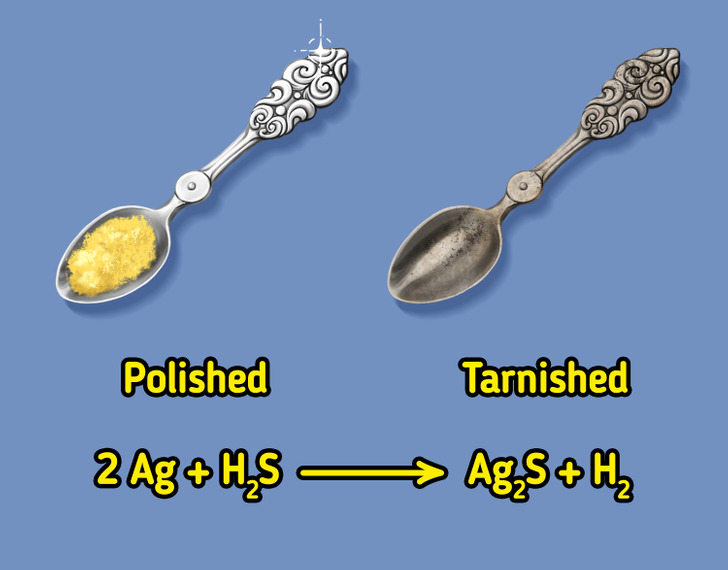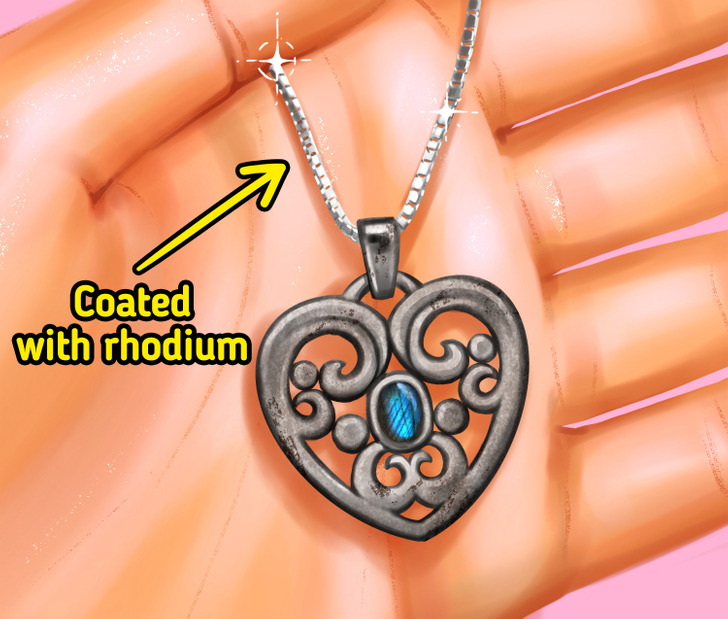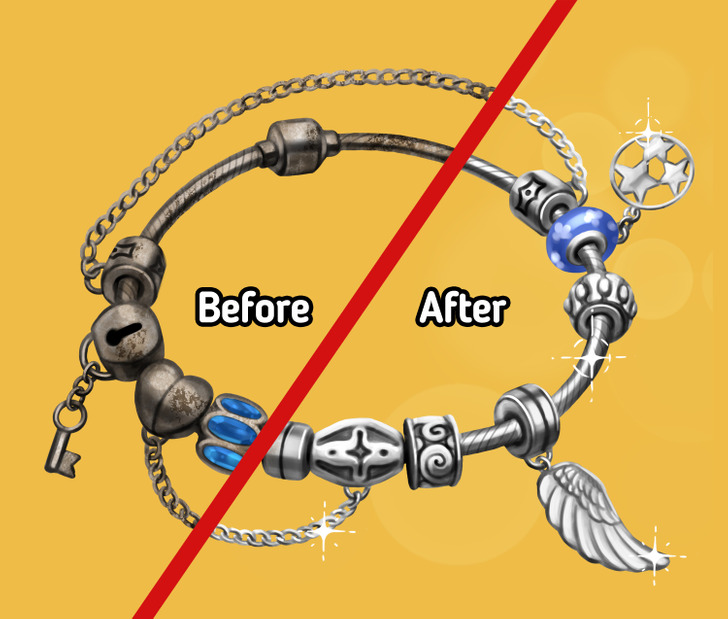Why Silver Tarnishes, and How to Avoid It
Tarnish is a form of corrosion that occurs when the outermost layer of some metals undergo a chemical reaction. Tarnish looks like a dull gray or black coating. It affects not only silver, but also copper, aluminum, brass, neodymium, and other similar metals.
5-Minute Crafts would like to tell you about why sliver tarnishes, how to avoid it, and what to do if your silver items get tarnished.
Why does silver tarnish?

Silver tarnishes due to the chemical reaction of the metal with sulfur compounds. As a result, silver sulfide (Ag2S) is formed, which looks like a thin layer of black on top of the metal.
Some sulfur compounds are found in hard-boiled eggs, mayonnaise, and mustard. Contact with them may cause silverware to tarnish. When exposed to air, silver items may turn black due to the reaction of silver with hydrogen sulfide (H2S). It’s a gas that is present in the atmosphere due to the activity of manufacturing plants and the decomposition of dead plants. The reaction of silver with hydrogen sulfide that results in silver tarnish looks like this: H2S; 2 Ag + H2S => Ag2S + H2
As a rule, silver tarnishes faster in places with high humidity or high levels of air pollution. In addition, perfumes, hairspray, deodorants, and moisturizers can contribute to the further tarnishing of silver due to chemicals in their composition that react with the metal.
Tarnish is a surface phenomenon. Unlike rust, it’s limited to the outer layer of the metal. Moreover, the upper tarnished layer protects the lower layers from chemical oxidation reactions and actually protects the main part of the metal.
How to prevent silver from tarnishing?

- Follow storage rules. Keep silver items in a cool, dry place away from sunlight. Ideally, they should be stored in airtight, sealed bags. You can put a packet of silica gel inside, which absorbs moisture and helps to delay tarnishing.
- Clean and polish your silver items regularly. Wash them periodically in warm water and wipe them with a special silver polishing cloth.
- Minimize contact with substances that can accelerate tarnishing. For example, remove silver rings while doing the dishes or cooking. Also, don’t wear silver jewelry when exercising or taking a shower or bath, and put it on only after you’ve applied makeup and perfume.
- Coat silver items with rhodium. Take them to a jeweler and have them rhodium plated. This will prevent them from tarnishing for a long time, and when the rhodium begins to wear off, you can have your jewelry re-plated.
How to clean tarnished silver?

Although tarnish is a form of corrosion, unlike rust, it doesn’t destroy the underlying metal and is relatively easy to remove. The easiest way to clean your silver is by taking it to a jeweler: they will do a professional cleaning of the item and make it look like new.
At home, slight tarnishing can be removed with a simple polishing cloth, but if the silver is deeply tarnished it’s better to use a silver polish — a special abrasive composition in the form of a cream that removes tarnish by abrading it. The disadvantage of this method is that you remove small amounts of silver along with the tarnish.
Besides, you can clean silver with aluminum. All you need is a bowl, aluminum foil, boiling water, baking soda, and table salt. Line a bowl with foil, add a teaspoon of baking soda and a pinch of salt, and pour boiling water on top. Then put the tarnished silver into the water. Make sure the silver touches the aluminum foil. Soon a chemical reaction will begin, during which the aluminum will displace the silver from the silver sulfide compound and replace it with aluminum sulfide. As a result, the tarnish will disappear. When cleaning, baking soda will help neutralize aluminum by-products, and table salt will act as a catalyst for all of the processes.